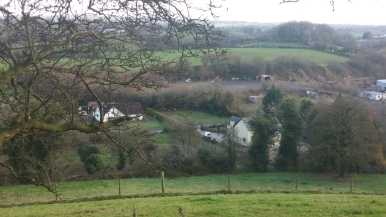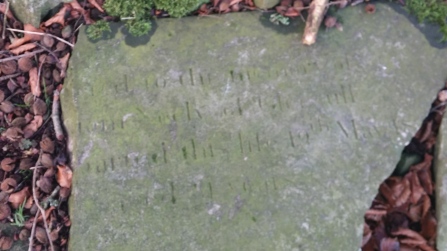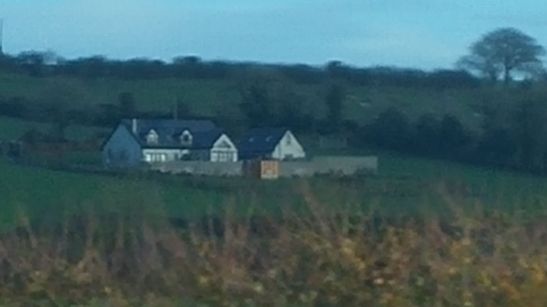(Speech given at Game Changers Summit, September 17, 2015. See coverage.)
I am Rev. Nancy Neelley Hicks – the director of ICT4D Church Initiatives, here at United Methodist Communications. I’d like to personally welcome you – as so many of you have come at my invitation! For me, this is like having my family meet my friends. It’s a joy for me!
We have with us today 7 United Methodist church workers who’ve traveled to the US for this conference. I’d like to recognize them now:
Rev. Betty Kazadi Musau – Democratic Republic of the Congo
Pierre Omadjela – Democratic Republic of the Congo
Julu Swen – Liberia
April Mercado – Philippines
Ernani “Nhots” Celzo – Philippines
Phileas Jusu – Sierra Leone
Chenayi Kumuterera – Zimbabwe
Three of the invited church workers were unable to join us because of U.S. visa issues:
Joe Tueche – Cote d’Ivoire
Daniel Garba – Nigeria
Hannah Mafunda – Zimbabwe
We hope that they can be with us for the next conference of this type.
Game Changers Summit is United Methodist Communications’ fourth international learning event this year – they’ve been held in the Philippines, Cote d’Ivoire, and Democratic Republic of the Congo prior to our time together today.
In June, I traveled to Cote d’Ivoire with a team to conduct training titled, “Communicating Faith in the 21st Century.” This training covered journalism, technology, branding and marketing of the church, social media and more. The gathering consisted of church workers from 8 different countries. We had planned the training based on interests and need. The day before we left, one of the guests shared the story of his life with us.
He is the only living child of eleven. He has strived to educate himself to live the best life on behalf of those who did not live long and full lives. His dream is to go to university. The first time he applied, he was able to raise sufficient funds but his visa was rejected. The second time, his visa was approved but he didn’t have quite enough money. The third year, he had money and a visa, but when he arrived to the university, he was robbed so he had to return home. The fourth year, he applied and the university said that his high school certificate had expired, so he would need a new one before being considered for registration.
This is a picture of him as Sybille Fleischmann handed him K-12 curriculum on a flash drive at the end of our conference in Cote d’Ivoire – helping him get a little closer towards his goal. Daniel was so happy to receive it, that he immediately began to inquire how he could protect it – so he would never have to lose it.
Here in the U.S., amber alerts, campus communication systems, weather alerts, up to date electronic curriculum and public health notices keep us as safe and educated about the things that matter most – so much so that we complain of information overload! But in other parts of the world, this flow of information is lacking – creating poverty of a unique sort…information poverty. This kind of information is the stuff that can save the lives of loved ones, build a better future for generations to come, and potentially build peace through understanding among warring nations.
The right communications through the right technologies can address many facets of human life that improve individual and community wellbeing. I’d like to share how United Methodist Communications has used information tools over the last year to make a difference in three areas – in crisis communications, education, and health.
Typhoons strike the Philippines regularly – as April Mercado has said, “We eat typhoons for lunch!”
But in 2013, Supertyphoon Haiyan struck – the 26th typhoon of the year killing over 6,300 people, and destroying livelihoods, schools and communities. UMCom provided a satellite phone, tablets for responders, solar lights and cellphone chargers, and engineering support to rebuild Internet access so information could flow among those seeking to help.
Since then, UMCom has worked with The United Methodist Church there to develop a ham radio network, where clergy can send storm warnings, and communicate after a typhoon. Ham radio is certainly not an emerging technology – it’s quite old! But, it’s appropriate! It was the last standing communication technology after Typhoon Haiyan. This summer, we worked with Emory University to have intern Victoria Phoenix go to the Philippines and assist in the building of a disaster communications protocol for the church. Our leadership in this area has inspired the United Nations Office for the Coordination of Humanitarian Affairs to request a similar system that can be used by first responders after a storm. We are working with church and community leaders to meet this need.
2014 and 2015 brought a different kind of crisis – one very unique from others. Ebola. This virus claimed the lives of over 11,000 people – primarily in Guinea, Sierra Leone and Liberia. Recognizing the strength of our human network, The United Methodist Church worked locally – leading interfaith initiatives, continuing to serve at high personal risk in clinics and hospitals, and communicating messages of health and inspiration through emerging technologies. Simple mobile phones carried daily messages from the CDC and WHO, letting clergy know that Ebola is real and that they needed to adjust behaviors in church by not touching one another, but instead bowing as a sign of respect. Nightly messages brought inspiration – like this one:
“As we struggle with Ebola, I pray that faith – not fear – will be our response. This is not the time for blame or denial. It is a time to respond in love. Bishop John Innis”
United Methodist Communications worked with Chocolate Moose Media and iHEED to create an animation to teach Ebola prevention at the height of the crisis – an animation that has been used by Catholic Relief Services in over 13 thousand households in Sierra Leone, played on satellite television throughout West Africa, played on UN Radio, and downloaded thousands of times for use throughout Africa. This animation was our first venture in producing multi-language video content for television, internet and mobile phones. UNICEF reached out to us, asking if we could partner in the production of a second video that could be used in non-critical times. This video will be available very soon.
You can learn more about crisis communications at this Summit through speakers shown on the screen.
Education:
Nelson Mandela said, “Education is the most powerful weapon which you can use to change the world.” How true! In parts of the world where Methodists built school buildings decades or even centuries ago, many suffer without the tools inside those buildings to allow students to participate in a global workforce. United Methodist Communications is working to develop models for addressing this problem.
Over the last year, we’ve established three new computer labs that utilize solar power to reduce fuel costs, and local computer servers that reduce the need for internet access. These labs impact vulnerable communities – those who are typically excluded from computer or education access. One of the computer labs focuses on women and university students, the other focuses on orphans. United Methodist Communications church partners in the US – The Church of the Resurrection in Leawood, Kansas, and The Pacific Northwest Annual Conference, plus church partners abroad – South Congo and North Katanga Episcopal Areas – have made this possible.
Rev. Betty Kazadi Musau who leads the initiative has said,
“It [the computer lab] boosts women’s skills and offers opportunities in computer literacy for them to be marketable in the community and provide to their families.”
Some in the room today can’t imagine women being denied access to technology. Kristin Peterson – co-founder of Inveneo once said,
“Women, in general, have 25% less access to the Internet, and in Sub-Saharan Africa that number soars to 45%. Even in rapidly developing economies the gap is immense. It is an injustice, that in an age of information, those who are the bearers of life are shut off from information that can actually save it.”
In addition to building models for the improvement of education, we have exposed many to free curriculum provided through World Possible – present here today. You can learn more about education and empowerment tools through speakers shown.
Health:
In 2009, I met a young girl in Zimbabwe named Thandi who was orphaned after her mother had died – not having had access to the medicine she needed in her struggle with AIDS. Some pretty simple and low-cost technologies can work to prevent this from happening again. Over the last year, we’ve worked with Medic Mobile to build The United Methodist Church’s first, formalized mHealth program. This system allows community health workers to send low-cost text messages to a dashboard so that drug stocks can be monitored. If a clinic is low in one particular medicine, drugs can be transferred from another clinic before the situation becomes critical like it did for Thandi’s mom. The system also keeps up with maternal health – charting high risk pregnancies, sending appointment reminders and notices if they miss an appointment. We did training this summer that included health workers from 57 clinics in the Democratic Republic of the Congo to scale the project beyond its initial first three clinics.
In Zimbabwe, text messaging is being used to keep community health workers in touch with the Nyadire Hospital. This program is ready for takeoff, and we hope that the next year will be one of success – in honor of Thandi’s mom – as a way of committing to communications that exemplify the abundant life that we proclaim as followers of Jesus Christ. Please be sure to meet speakers Julio Malikane, Rev. Betty Kazadi Musau, Chenayi Kumuterera
When I tell people that I am an ordained United Methodist minister, they assume that I pastor a congregation. Some people wonder why the church is involved at all in technologies like the ones I’ve just shared. Others question why we would spend money on technology, when the essentials of life like food, water and shelter are still so greatly needed. But this is limited thinking that will keep us set on a model of charity rather than empowering people to live equally as God’s beloved creation. Modern technologies can expand our ability to think new thoughts and dream new dreams. I mean, can you imagine stepping back in time to no patient records, outdated textbooks, and nothing to help us project weather forecasts? Why would we think that was acceptable for others? Information and communication technologies are the channels through which lifeline communications can flow. 21st century communications offer possibilities to the church as never before. Never has the church been able to communicate as one body across geographic locations, within the same day, minute by minute. Never have we been able to reach the communities the church serves in such ways that can improve access to food, and medicine and potentially reduce poverty! We are living in a new age, and it is a natural role for the church to interpret these technologies for social good – to be used for the building up of minds and bodies and spirits…making life on earth a foretaste of heaven.
What can we do together as a global entity? The United Methodist Church alone has over 13 million members worldwide who participate in ministries that impact even larger numbers within the communities they serve. The United Methodist Church participates with other faith traditions to overcome challenges they face together. We have a very real social gospel that teaches us to educate, provide healthcare, honor women and men alike, care for the vulnerable, and live fully into the gifts we’ve been given until we reach perfection.
If we utilize the tools of today, we can rebuild the schools of days past so that the minds who shape the future will do so with intelligence and respect for fellow humanity; we can inform people about disease and outbreaks before they seize lives and livelihoods; if we utilize the tools of the day, we can nurture the development of communities to stand together against calamity and disregard for human life. The possibilities are endless when we combine technologies with faith, love and hope – and yes, clear communications.
How will we respond? I pray that this Summit will inspire us all with new thoughts and the ability to live into the beloved community. I’d like to close with this Franciscan blessing:
May God bless you with discomfort,
At easy answers, half-truths,
And superficial relationships
So that you may live
Deep within your heart.
May God bless you with anger
At injustice, oppression,
And exploitation of people,
So that you may work for
Justice, freedom and peace.
May God bless you with tears,
To shed for those who suffer pain,
Rejection, hunger and war,
So that you may reach out your hand
To comfort them and
To turn their pain to joy
And may God bless you
With enough foolishness
To believe that you can
Make a difference in the world,
So that you can do
What others claim cannot be done
To bring justice and kindness
To all our children and the poor.
Amen




















